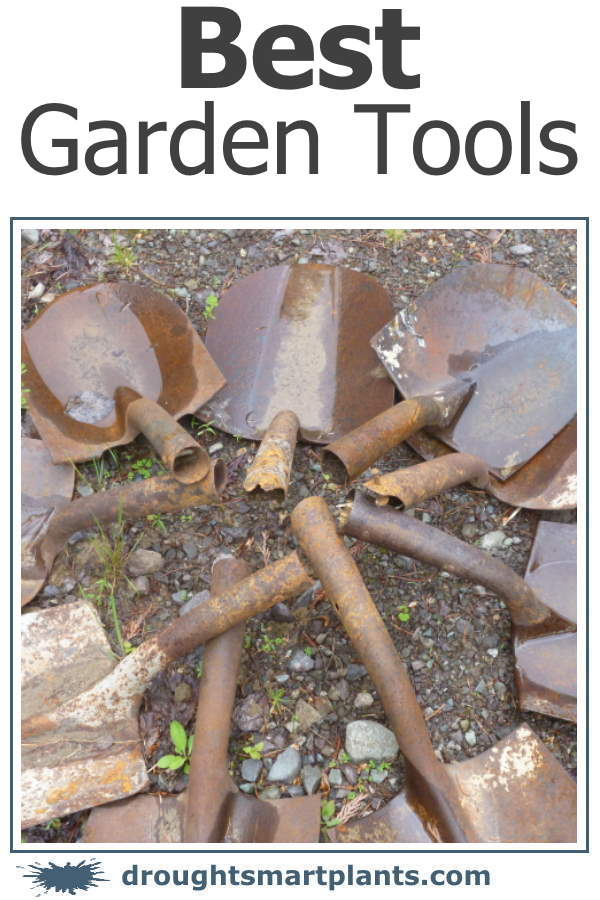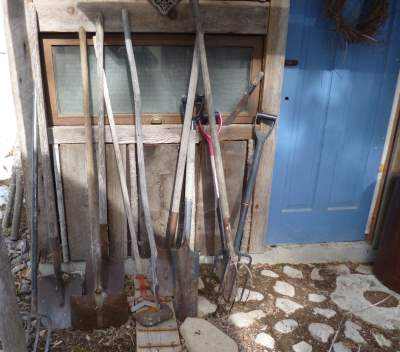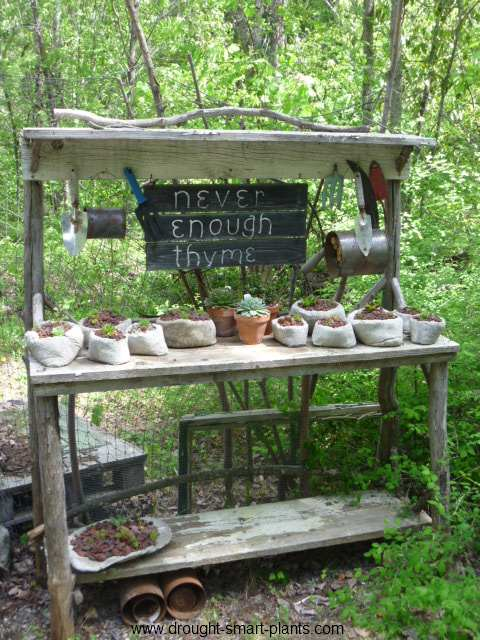Make your gardening life easier
As an Amazon Associate I earn from qualifying purchases.
Other links on this site may lead to other companies that I’m associated with.
All of us have favorite gardening tools that are indispensable. The best garden tools are strong and well made, and sized to fit our particular needs.

The right sized tools are very important, especially for women, who are usually smaller in stature and have smaller hands. Make no mistake, gardening, enjoyable though it is, is hard work – the right tools can make a difficult task easier.
In my nursery I’ve accumulated lots of irrigation tools and tools for propagation. I also have a kit of tools for plant collecting that goes with me wherever I go.
When buying new gardening tools, here are a few things to check, in addition to how they fit your hand and height.

- Look for metal on spades and shovels that is welded, not just pressed on.
- Good quality tools have rolled edges, not stamped out with a press.
- Attachments are best riveted, such as where the blade of the shovel meets the handle.
- Avoid tools that are cheap imitations of well known brands, as they may look like the original, but there’s no guarantee they will work the same, or stand up to the wear and tear of a busy gardener.
- Flimsy and poorly made tools may be cheaper, but replacing them every year or two is false economy, not to mention the frustration of having a necessary tool fall apart at the wrong time, or even worse, be difficult to use. A well made, quality tool will last a lifetime with proper care. For proof, look at some vintage garden tools; made with pride, these are still in use today.
Gardening Tool Care
Most tools need some rudimentary care. In fall, when the gardening season is over, it’s easy to just throw them in a corner and forget about them until next year, but the few minutes spent taking care of them before storing can pay off.
- Look your gardening tools over for damage, repair any that need it, then clean and oil them before storing them.
- Tighten up any loose nuts, and keep your tools in a dry place for the winter. For smaller tools, I use a recycled mailbox in the greenhouse to prevent condensation from the roof falling on them.
- Keep smaller hand tools in a moisture proof container with the silica gel capsules saved from cameras and other electronic items to prevent rust.
How to Clean garden tools
- To clean your larger tools such as shovels, spades and rakes, use coarse steel wool to take off any obvious rust.
- A bucket filled with sand and used motor oil can be a useful addition to your tool shed. Plunge the tool up and down a couple of times to completely coat the blade with a thin layer of oil before storage.
- Store all tools in a dry place to preserve the wooden handles, which can also benefit from a light coating of oil; linseed oil works well for this, and it will soak in over the winter.
- Tools such as pruners should be wiped with fine grade steel wool periodically, especially if used for very sappy wood such as coniferous species that have resin. I also rely on isopropyl alcohol to take off the sap, and also to sterilize the blades between cutting to prevent the spread of any diseases.
- Spray with WD40 or other penetrating oil product to get in all the crannies.
How to Sharpen garden tools
If you’re brave enough to try sharpening your own pruners, remember to only file on the beveled side, and always at a 23 degree angle, which is half of a 45 degree angle. There are also jigs available for getting the perfect angle on your pruners which can be bought mail order from several sources.
Shovels should be sharpened with a file, and to create a good cutting edge, only file the back of the blade. This makes it easy to cut through roots, instead of wearing yourself out chopping them.
Maintenance and care only takes a few minutes, but it’s time well spent on the tools of your trade. Taking them out of storage in the spring when the sap is running high and you just want to get gardening should be a pleasure, not a chore.


